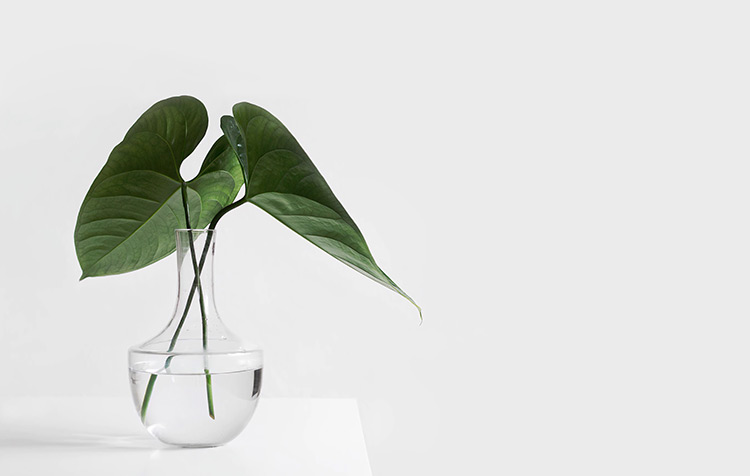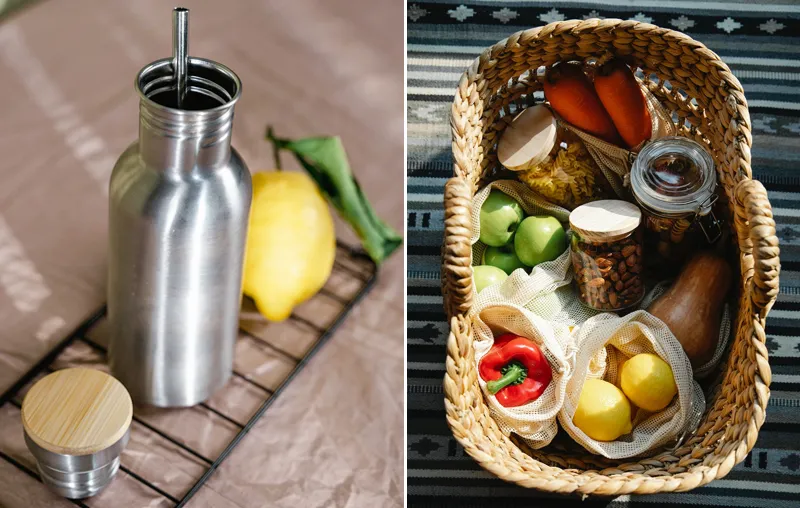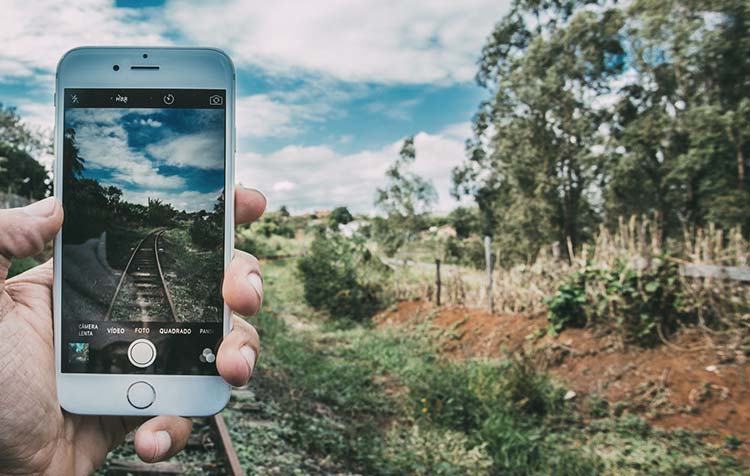Have you ever heard of Bioplastics heard? This special plastic has been around for a few years. You can find out what's behind it in my article. Can you really dispose of bioplastics in your own compost? And is it really much better than normal plastic? We will now clarify these questions together in the article. Let's go!
What is bioplastics actually?
We encounter plastics everywhere in our everyday lives, whether in the supermarket, in our Furniture or in drugstore products. Conventional plastic is made from petroleum and cannot be broken down in nature. Over time, the plastic pieces break into smaller and smaller parts. At the end of this chain, microplastics are created, which is particularly dangerous for our environment, as it is transported all the way into the oceans and accumulates there in living creatures. In recent years, plastic production has increased sharply, so that the environmental problems, especially in Asia, are intensifying.
As an alternative to the conventional Plastic from petroleum, bioplastics have been available for a number of years. Bioplastics are made from natural, renewable raw materials, as the case may be, and can be biodegradable. There are some types of plastic that are not made from renewable raw materials but are nevertheless biodegradable. A substance is biodegradable if it is broken down again into its basic components by organisms.
The natural raw materials can be of a very different nature. For example, cellulose or starch is extracted from plants such as corn or grain and processed further, or raw materials are modified by bacteria in such a way that they can be converted into plastics (i.e. polymers).
The disadvantage of biodegradable plastic is that it is said to decompose even at low temperatures, is not very durable in everyday life and for this reason cannot be used for everything. To avoid this, substances are added to the plastic to improve these properties. Due to these additives, the plastic may not be biodegradable.
How can I dispose of bioplastics?
Bioplastics are theoretically degradable at temperatures above just under 60°C. This means that you can't dispose of it in your home compost, as the temperatures are simply not sufficient for degradation. You can, as long as you find an appropriate seal on the item or it is written out, dispose of the item via organic waste. For industrial Composting much higher temperatures are reached due to the limited time available for the production of the compost, so that the bioplastic can be degraded there.
Unfortunately, it often happens that the bioplastic is sorted out of the organic waste in advance like the normal plastic, because it is considered as a disturbing material. Furthermore, the decomposition of the bioplastic does not produce any usable nutrients, but only water and CO2.
If a sufficient amount of bioplastics existed, the Recycling the best option. Either material recycling would be possible, in which the bioplastic is first mechanically shredded and then reshaped. Another alternative is chemical recycling, where, in simplified terms, the bioplastic is broken down into its basic components and then virtually reassembled. Unfortunately, bioplastics are not recycled at the present time because the quantities are simply too small.
Currently, bioplastics are mainly disposed of in residual waste and therefore incinerated. This is particularly unfortunate, as it offers no advantages apart from energy recovery. Currently, it is best to dispose of degradable bioplastics in your organic waste.
How do I recognize bioplastics?
You can recognize bioplastics by the fact that they have their own seal. Sometimes there is a note on the products that it is biodegradable. At the current time, disposable tableware and cutlery are often made from bioplastic, especially collapsible bowls and drinking cups. Other applications are in the horticultural sector, as bioplastics have the advantage that they do not have to be collected by farmers afterwards.
In addition, bioplastics are very often used in medicine, so sutures, nails and implants do not have to be taken out again. This saves costs on the one hand and resources and medicines on the other.
Is bioplastic really better than normal plastic?
Plastic is made from petroleum, a fossil resource that is not initially regenerated, so used petroleum is not re-produced. In addition, this process produces CO2-emissions, which in turn increase climate change.
In various studies and life cycle assessments, bioplastic has been compared with conventional plastic. At the present time, it is no more environmentally friendly than conventional plastics. On the positive side, no fossil resources are consumed in the production process, resulting in lower greenhouse gas emissions, such as CO2 and methane, are caused. In addition, the plants used bind CO2.
On the other hand, for the Cultivation of the plants Land is used that is not available for the production of food and for which fertilizers and sometimes even pesticides are used. Depending on the crop grown, especially corn, monocultures are encouraged, which promote the loss of biodiversity.
All in all, bioplastic has partial advantages over conventional plastic, but not enough to declare it more environmentally friendly per se. It is predicted that the environmental impact will decrease in the future, as bioplastics are still at the beginning of their development. In particular, residual materials from the food industry, such as whey, are an interesting and environmentally friendly alternative to cultivated plants.
All in all, bioplastics, therefore, is a great alternative to keep in mind for the future.
Kind regards,

PS: Also be sure to read the post about Microplastics in cosmetics by.






Hi Anna, I or we have decided to actively do something against the plastic waste flood. We now want to found a voluntary association and volunteer "vacation" as a garbage collector abroad make and this just now also plan.
Sincerely
Dennis Müllet
Hi Dennis! That's great. Then definitely use our worldwide facebook community on facebook to this! 🙂
There you can share dates and especially pictures of your actions, and find and support other people who are regularly doing organize a Beach CleanUp.
Best regards and good luck,
Christoph
Halo Anna,
Thanks for the great post. But do you have ine source for disposal in organic waste. I have studied infrastructure planning with a focus on water and waste and have been dealing with the topic for some time. Because in Germany every municipality/city regulates the waste disposal differently and also has different procedures with the bio garbage can, the bioplastics are sometimes allowed in the bio garbage can but sometimes not. I always know only "Bioplastics must be in the residual waste, because the processing times of the composting plant are too short".
Hi Ann-Kathrin, Anna had written the article - I'll try to reach her and ask 🙂
Best regards
Christoph